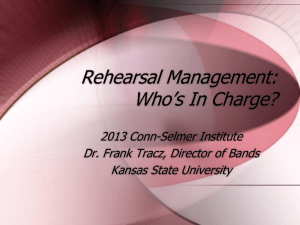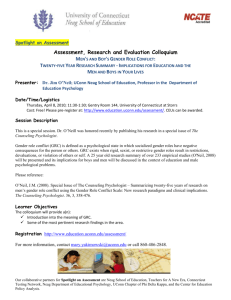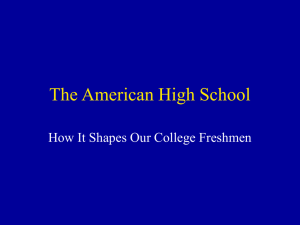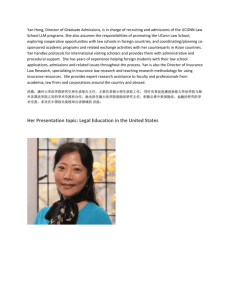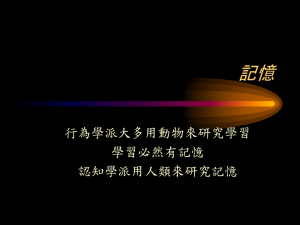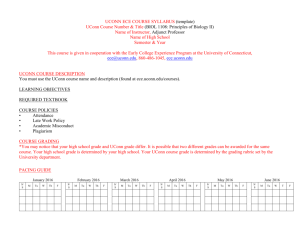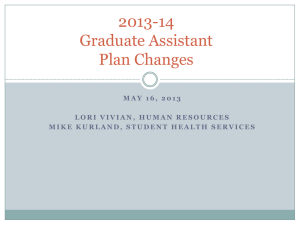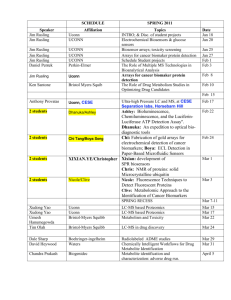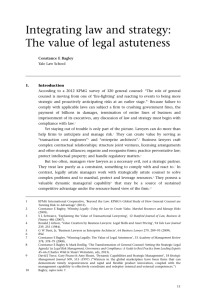Birthday Worship Memo
advertisement
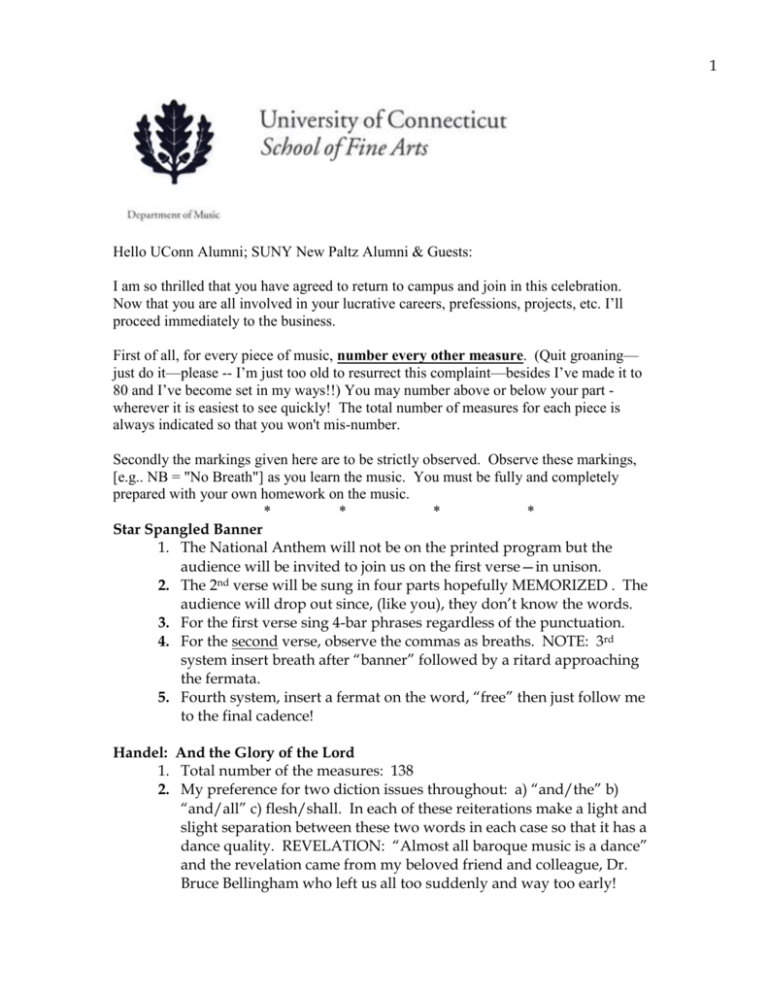
1 Hello UConn Alumni; SUNY New Paltz Alumni & Guests: I am so thrilled that you have agreed to return to campus and join in this celebration. Now that you are all involved in your lucrative careers, prefessions, projects, etc. I’ll proceed immediately to the business. First of all, for every piece of music, number every other measure. (Quit groaning— just do it—please -- I’m just too old to resurrect this complaint—besides I’ve made it to 80 and I’ve become set in my ways!!) You may number above or below your part wherever it is easiest to see quickly! The total number of measures for each piece is always indicated so that you won't mis-number. Secondly the markings given here are to be strictly observed. Observe these markings, [e.g.. NB = "No Breath"] as you learn the music. You must be fully and completely prepared with your own homework on the music. * * * * Star Spangled Banner 1. The National Anthem will not be on the printed program but the audience will be invited to join us on the first verse—in unison. 2. The 2nd verse will be sung in four parts hopefully MEMORIZED . The audience will drop out since, (like you), they don’t know the words. 3. For the first verse sing 4-bar phrases regardless of the punctuation. 4. For the second verse, observe the commas as breaths. NOTE: 3rd system insert breath after “banner” followed by a ritard approaching the fermata. 5. Fourth system, insert a fermat on the word, “free” then just follow me to the final cadence! Handel: And the Glory of the Lord 1. Total number of the measures: 138 2. My preference for two diction issues throughout: a) “and/the” b) “and/all” c) flesh/shall. In each of these reiterations make a light and slight separation between these two words in each case so that it has a dance quality. REVELATION: “Almost all baroque music is a dance” and the revelation came from my beloved friend and colleague, Dr. Bruce Bellingham who left us all too suddenly and way too early! 2 Basses: m. 76 beat two: there is always a problem finding your D#. Please use your ears and isolate that entry in your sectional rehearsal. Tyler: Abide with Me The genesis of this composition came into being without my immediate knowledge. The dedication of the commission reads: -In celebration of the 80th birthday of Dr. Peter Bagley. Needless to say I’m very moved and grateful that he shares his very impressive commendable talent with us. For the premiere performance I’ve asked Ed to conduct his own work by sharing this birthday present with us all. However, due to VERY unlimited rehearsal time to do justice to his compositional talent to you, all, Ed has graciously agreed to provide a preview runthrough in the event that it may peak your curiosity and interest for a performance in the very near future. Thank you Ed for this marvelous birthday gift! Bagley: Live-A-Humble 1. Total number of measures: 86 2. This was written by an anonymous dead composer friend of mine, so let's try to keep him happy!! 3. Two minor changes or misprints: Measure 28 - First basses - add 5th line "A" on the word "out". On that chord, the piano reduction is correct. Measure 66 - Second tenors - add 2nd space "A" on the word "I've". Therefore, the full chord reads from bottom to top: F#/B/A/D. 3. Don’t spend much time on the refrain—that’s the easy stuff. Concentrate on the verses—especially the SSAA/TTBB verses. The refrain sings itself—it was original designed for and created for Junior High School basses in Riverside, CT. In fact we have TWO of our UConn grads (Matt Tracey and Cris Wasko )occuping the same position in the same building that where I began my formal [paid!] teaching career. And how does the first line of that gospel hymn go: May the circle be unbroken—by and by, Lord, by and by! Britten: Lift Boy 1. Total number of measures: 103 2. Who is Robert Graves? 3. The major challenge of this piece, is singing short little motives that get tossed back and forth between the parts, but don’t feel connected. It will be somewhat frustrating to learn it within on your own or in small ensembles, but the whole makes a big impact when it is put together. Learn the notes carefully, slowly and accurately. 3 4. There is a major issue with two passages that appear to be identical but are very different. Compare m. 6 with m. 25 to the text is between “you”/”the”. In m. 6 the interval is a minor 3rd, whereas m. 25 the interval is a minor 2 nd or half step. You will want to sing the second instance like the first. DON’T!!! 5. As choristers in the enfolding sequence of this tale, realize that you are not the only star in this horizon. As you learn and put the whole thing together pay particular attention to what one English critic writes about Lift Boy: “Lift Boy is jaunty, the piano part an essential part of the humour as it pokes and prods the chorus http://goodmorningbritten.wordpress.com/2013/06/09/listening-to-britten-two-two-part-songs/” Whalum: The Lily of the Valley 1. Total Number of Measures: 49 NOTE: mm. 17-32 are for women only mm. 25-32 are for men only mm. 33-40 = divisi parts. Please mark your scores accordingly. On the surface this spiritual appears to be fairly straight-forward, but there are general and specific issues to address: 2. Textual issues: a.-Two syllable words: In spite of the written notation, back off the 2nd syllable of words like: “lil-ly”, “val-ley”, “Gos-pel.” “Lord” just delete the “r” so it rings as “laud” or “lawd” 3. G.O.P issues = These are LOOK AHEAD TRAPS: mm. 16-17 WOMEN ONLY (SSAA) = S1’s on your toes! mm. 24-32 MEN ONLY. Finding your beginning pitch is the only issue going into m 25. mm. 32-32 = coming together. Note “slightly faster” on the page turn. So turn the page on or before m. 33 and you’re set to go (duh!) 4. For the “Coda” from mm. 41-49: a) Sing as written b) Follow verbal intructions for changes. NOTE: Each performance will change. c) Keep your EYEZ on the PRIZE! d) We are performing Dr. Wendell Whalum’s moving spiritual with the assistance of a special guest of honor, Mr. Brendon Stanard from The Lincoln University, Lincoln, PA Drotos: The Tragedy of Macbeth 1. NOTE: it’s a CANON, with individual twists and turns within the repetitions. 2. Melodically you must be totally confident with half steps and whole steps— especially decesending within this “basterdized” context g minor harmonic (?) scale. Sometimes it’s F# then sometimes it’s F-natural. Sometimes it’s C# then sometimes it’s C-natural. Look at mm. 10-11: it’s C# and E-natural in m. 10 but totally reversed in m. 11. With C-natural and E-flat. The “dirty, 4 little secret” is the F-natural buried in the rising scale ending on the dominant. of gminor! OK—so you left or burned your theory text books way long ago but if you have TOTAL accuracy with mm. 1-12 (men) and/or the tutti version @ mm 25-36, we should be home free. 3. mm 53-74: Once we have the main theme totally down—basses, you get do it again as a cantus firmus. Both the use of this compositional technique in normally placed in the tenor or the soprano—in which the other voices become more or less subordinate to this treatment. Note the doubling @ the octave so that the texture becomes even more sinister! We’ll need lots more Bass II here so, vocally, if you have those bottome notes--go for it—We can easily re-assign the top octave. Do nothing ‘till you hear from me. 4. You do know that Ron suggests from the beginning that the 8th’s should be ‘swung’. That’s hip/jazz talk for getting outta the “burbs” and “swinging” with the downtown crowd However, for Harlem that would be uptown! 5. Anyone up for vocal percussion?? I’ll check with Ron to see about the possibility of including this color! Agnus Dei (from Harmoniemesse) Josef Haydn Kathryn Guthrie, soprano Megan Friar, mezzo soprano Jack Pott, tenor Anthony Leathem, bass-baritone 1. First of all—please welcome our very special solo quartet consisting of all four professional artists in their chosen specialties and locations and directly connected to our fabulous department of Voice and Opera: Kathryn (a.k.a. known to us our family as “Kat” Guthrie http://www.kathrynguthriesoprano.com/; Megan Friar: http://www.metopera.org/metopera/season/bio.aspx?customid=3650&type=1 Jack Pott: http://harttweb.hartford.edu/community/about/faculty/ensembledirectors/jpott.asp x Anthony Leathem: http://csa.uconn.edu/faculty/leathem-anthony/ Please welcome them back to campus and introduce yourselves during the course of this incredible day of celebration! 2. The reason for introducing our fabulous solo quartet as “former and current” artists is simply because they have the first word in this last movement. Your involvment begins in the 2nd half of the movement at Allegro con spiritu (m. 44). Therefore befor the first rehearsal, you MUST put a paperclip between pgs 65-69. ABSOLUTELY NO VISUAL PAGE TURNING WHILE THE QUARTET IS SINGING! 3. There is one more dangerous page turn in this finale section. YOU MUST TURN THE PAGE ON m. 168 and NOT on m. 170 for two reasons: a. Because you will obliterate the diminuendo into the downbeat of m.169 5 b. Because the following 4-bar interlude sets up the return of the solo quartet! 4. mm. 189-196 must be MEMORIZED because: a. The page turn b. The purest unison “f-natural” you can possibly sing @ m. 192 c. The breathtaking harmonic surprise @195—the only fermata in the mvt.! 5. Words/Texts and Music: There are only 3 words in the remainder of the movement: Dona nobis pacem. Generally the stress will always fall on the first syllable—no problem. In these last two pages I hope you will experience nothing but breathtaking boldness with harmonic and rhythmic daring and genius at every turn. PUNCTUALITY: All rehearsals will begin promptly at the appointed hour. I know that considerable socialization will be one of the orders of the day—but please use the breaks for that activity. Please be seated in your section at least 5 minutes before each session. MATERIALS: Each singer is expected to come fully prepared for every rehearsal with his/her own music previously marked, edited according to issues raised in this “Worship” memo BEFORE the first rehearsal. Sharing of copies will not, of course, be permitted. Also, please have 2 pencils at every rehearsal. VOCAL SALVATION: Monitor your own vocal stammina. For Sat. morning, we’ll NOT do an extensive warmup—The Star Spangled Banner will BE the warmup— besides, how many even knew this alternate verse even existed. MUSICAL PREPARATION: Much of the rehearsal time will be utilized in giving, and rehearsing new markings. For all of the pieces mentioned above I am expecting you to be fully prepared. Let’s make great music FIRST while enjoy the company of each other and catch up on old, sweet memories. I suspect that many members of the UConn music faculty (and other disciplines) probably don’t have a clue about this event or that you’re in town for the weekend. You have come from near and far so you are in the best possible position to inquire about your favorite members of the faculty and staff. UConn email has not changed that much: john.doe@uconn.edu might produce some hits but make your inquiries early this week. Seek their presence for the evening concert and invite them to the post concert reception as well. Sincerely, Your beloved, “PB” Dr. Peter Bagley e-mail: peter.bagley@uconn.edu
